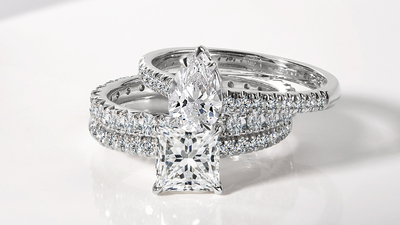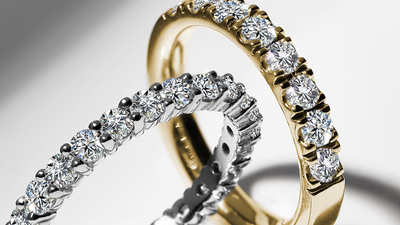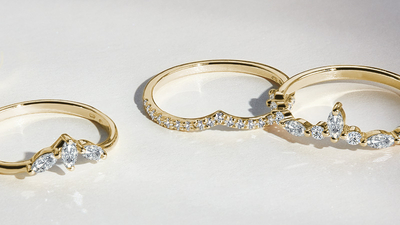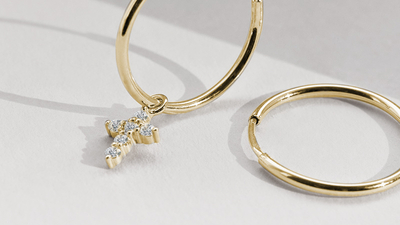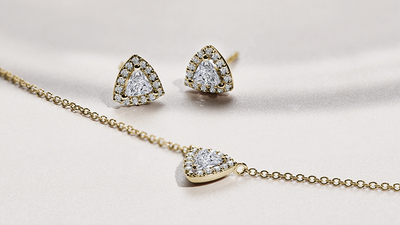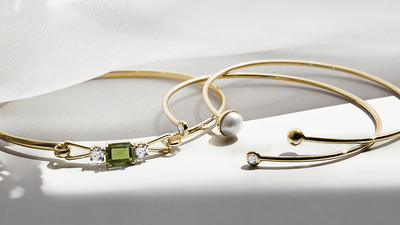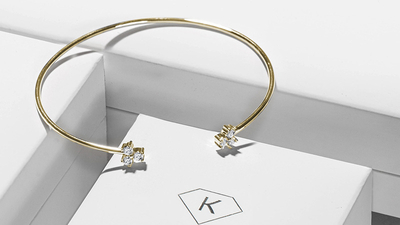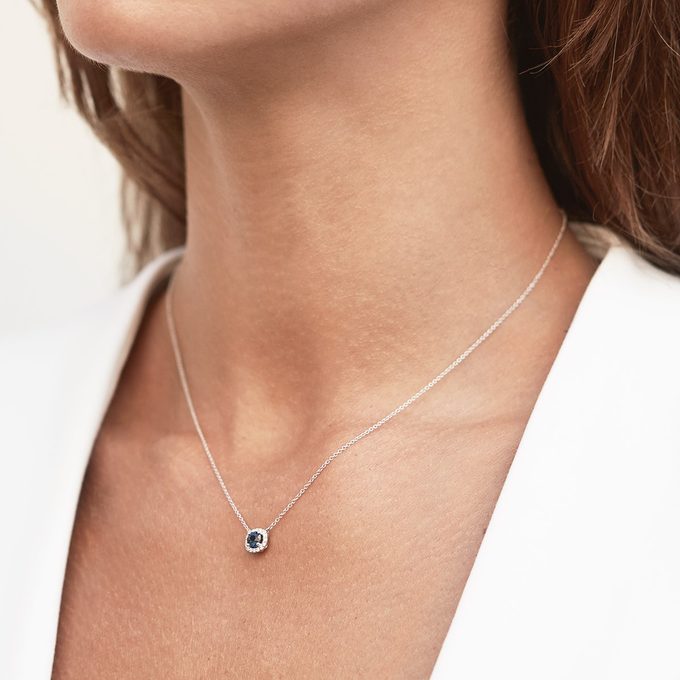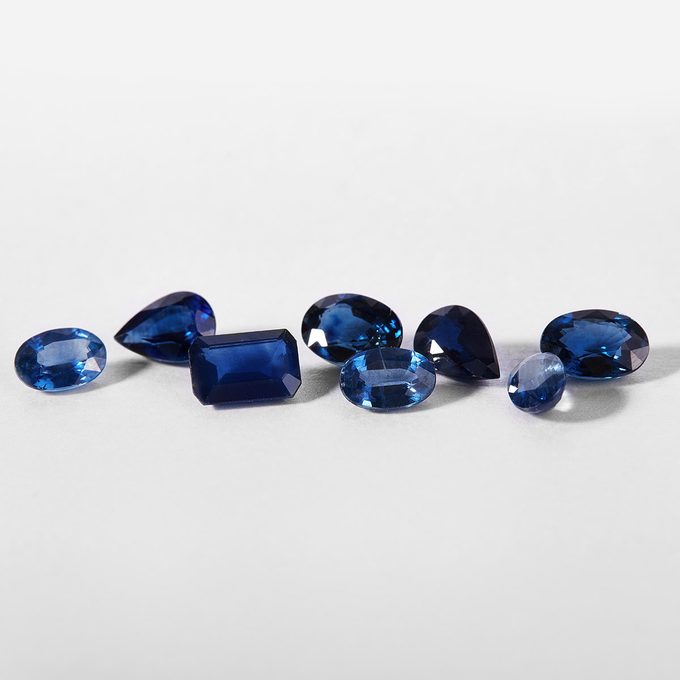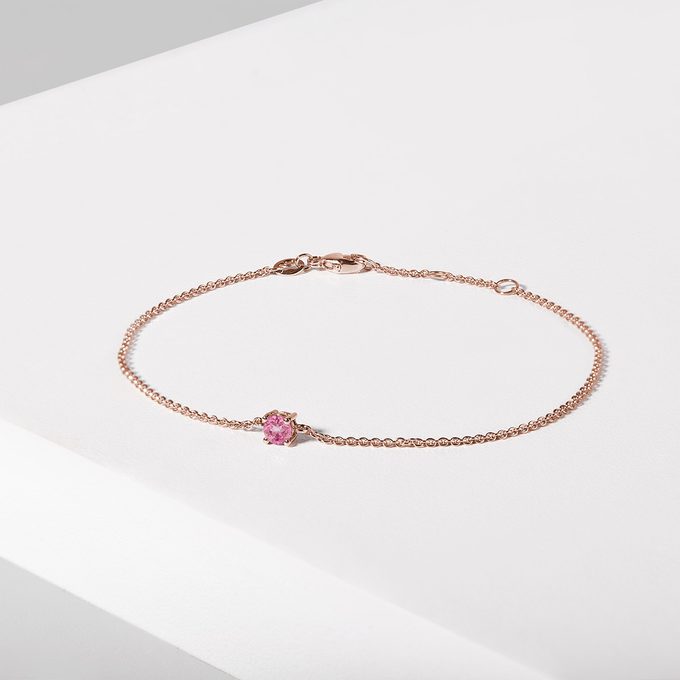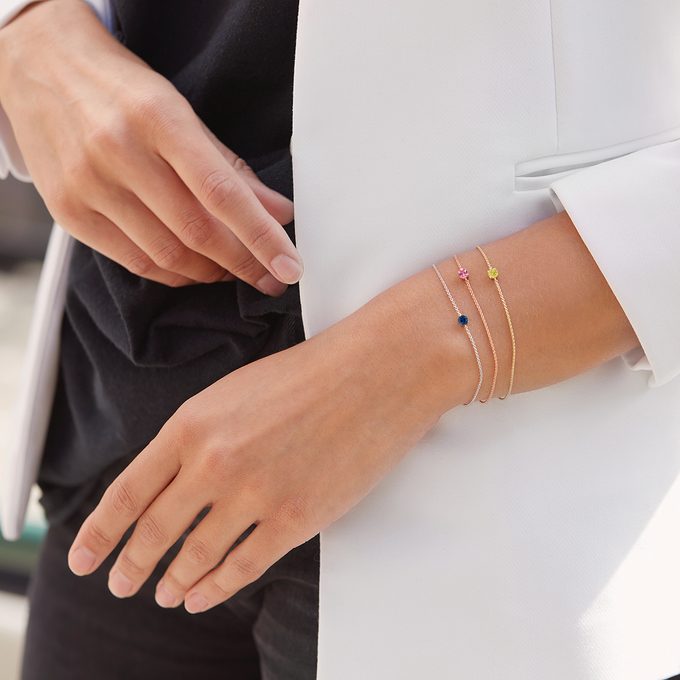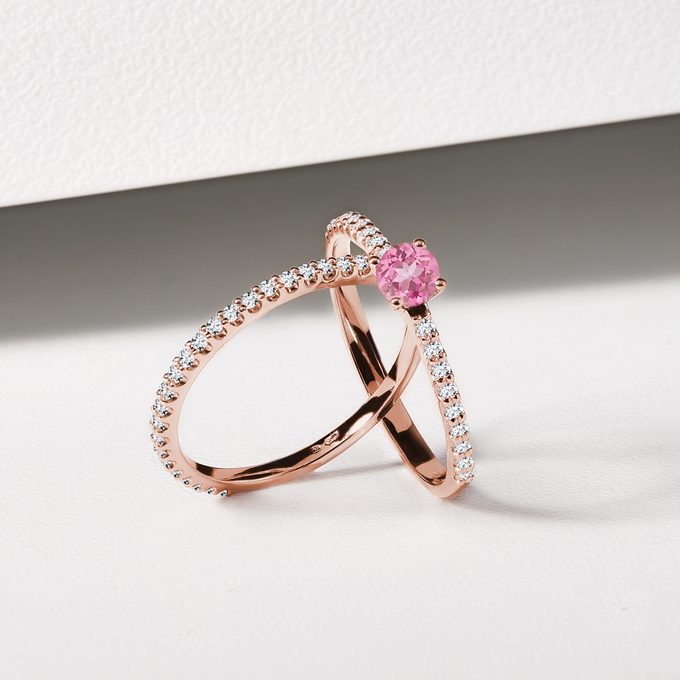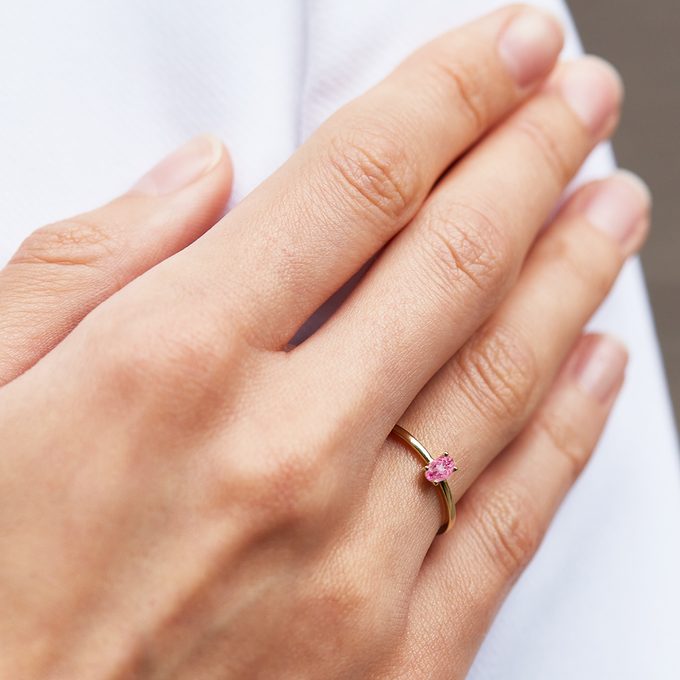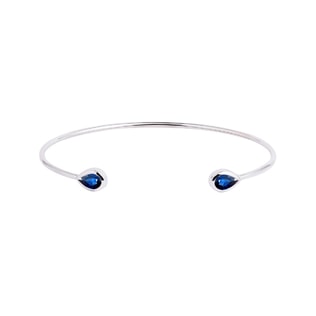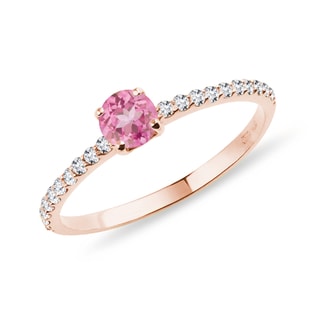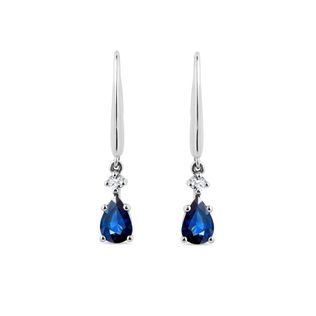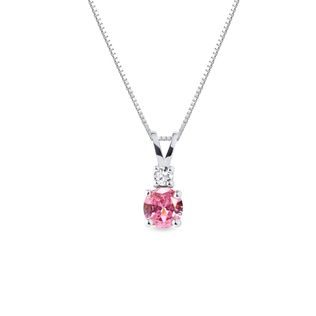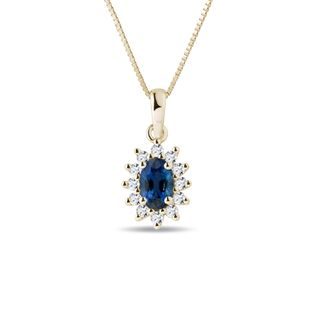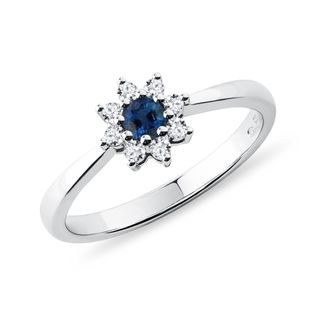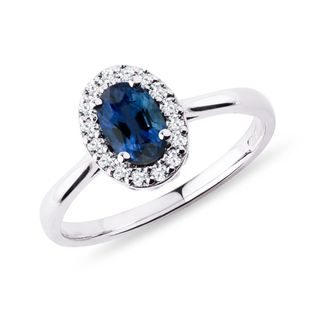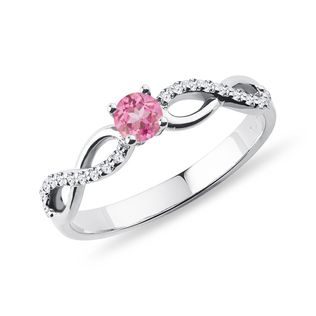Sapphire’s name is derived from the Hebrew word for blue - sappire. This might give the impression that sapphires exist only in shades of blue but this is not the case. In fact, they come in lots of beautiful colours which we will tell you all about.
Colour sapphires were not known about in the past
Throughout history, any discussion involving sapphires was generally about blue sapphires because people considered its other colour varieties to be another type of gemstone. The development of technology and science helped to accurately identify them as sapphires. Blue sapphires used to be a symbol of royal power and sovereignty. They adorned the robes of royalty, the nobility as well as the clergy, for whom they symbolized Heaven. In Buddhism, they were used in meditation and were believed to calm the mind and to direct a person’s thoughts. In antiquity, they played the role of protective stones that watched over their owners. They were also associated with chastity and were said to have the ability to make peace between enemies. It is speculated that the first sapphires were brought to Europe from India in the 4th century BCE by Alexander the Great.
In the 20th century, Prince Charles caused a bit of a storm when he proposed to Diana Spencer. Until then, all marriage proposals in the royal family had only involved diamond jewellery, but Diana liked that sapphire ring so much that together with Charles, they decided to break this tradition. Within a few days, a sapphire frenzy developed and every second woman in England wanted a ring like Lady Di and sapphire prices rose rapidly on the back of this. Later the same ring adorned Kate Middleton's hand when she became engaged to Prince William.
In addition to marriage, sapphire jewellery is traditionally given on the 5th and 45th wedding anniversaries. September is the designated month for sapphires in the calendar, so it makes a beautiful birthday present for those born in this month. Out of all the star signs, it best suits Taureans, because it is as resilient and fragile as they are. It also suits Scorpios, Aries, Leos and Sagittarians. Read more about blue sapphires in our special article on them.
Sapphires up close
The sapphire is very hard. Together with the ruby it is a type of corundum, which is rated 9 on the Mohs scale of hardness. Only the diamond is harder than sapphires on the scale. Sapphires do not cleave, they have a conchoidal fracture, a white streak and crystallize in the trigonal crystal system. Their crystals are either columnar, rhombohedral or bipyramidal and they can be tabular and form granular aggregates. Due to their hardness, sapphires are resistant to erosion and external influences. They are therefore found in sediments and alluvium.
From a chemical point of view, sapphires are aluminum oxide with the chemical formula Al2O3. The formation of corundums is associated with an environment which is rich in aluminum and poor in silicon, but corundums are also found in rocks that have undergone heat-pressure metamorphosis (dolomites, bauxites, crevices, shale, etc.).
Interestingly, pure corundum is allochromatic, which means that it is colourless or white. The colouration is caused by the presence of other elements in the sapphire’s structure or through a deformation of the crystal lattice. If there are other elements present in the stone which have caused it to colour, we refer to these stones as coloured varieties of corundum – these are mainly sapphires and rubies. Other varieties are leuko-sapphires (colourless, transparent sapphires) and emery sapphires (grayish-black to black in colour - these are used as abrasives). All colours except red are called sapphires. It’s a bit controversial but a red coloured corundum is called a ruby. But then a problem arises when a pink corundum appears. Is it a light red ruby or a pink sapphire? Gemologists around the world have been asking this same question. At KLENOTA, we refer to pink corundums as pink sapphires.
Types of colour sapphires
What colours are there to choose from? In general, the most valuable sapphires have an intense uniform colour. Sapphires which are not blue or which are colourless are called fancy and these include pink, orange, yellow, green, purple and violet stones.
As with diamonds, a colour standard is used to evaluate the colour of a sapphire and there are three basic parameters which are judged: hue, saturation and tone with hue meaning the basic colour of the stone. Colour saturation is rated on a scale with the following classifications: weak, fair, medium, strong and vivid. This assessment is based on the extent to which the basic colour of the stone is masked by brown or gray in it. The tone is also rated from very light - light - medium - dark and very dark. The most valuable sapphires are in the strong and vivid category of intensity with a medium or dark tone. The stones rated as very dark may appear black, especially when it comes to blue sapphires. But even stones with a light and vivid rating can be very nice. So as with any other stone, we therefore recommend that you follow your heart when you are making a choice.
Padparadscha
This exotic name for very rare sapphires comes from Sri Lanka and in Sinhalese it means “lotus blossom”. The colour of these unique pieces is difficult to describe, the closest to it is a pinkish orange salmon colour. It is caused by a mix of iron and chromium with a small amount of vanadium. The ratio of orange and pink is unique for each stone, so there are no two stones in the world which are alike. Princess Eugenie of York wears a ring with a padparadscha sapphire. Her wedding ring is made of yellow gold studded with diamonds and a beautiful salmon colour sapphire.
Pink and purple sapphires
A red colour in sapphires is caused by the presence of chromium which is also responsible for shades of pink. The boundary between a pink sapphire and a ruby is often difficult to determine, but the more chromium, the richer the pink to red colour. These stones also contain trace amounts of iron, copper, titanium and magnesium. Pink sapphires are very feminine, delicate gemstones. It is said that wearers of pink sapphires are able to find their true selves and to look inside their own feelings. They also apparently amplify love.
The allure of pink sapphires has also been discovered by Lady Gaga who wore a large pink sapphire surrounded by diamonds as her engagement ring. You’ll likewise find engagement rings with pink sapphires and other jewellery at our studio. We set them into yellow, rose or white gold and we have written about them in more detail in this article.
When it comes to purple sapphires, it is crucial that their dominant colour is truly purple, otherwise they can easily be mistaken for amethysts. However sapphires have a much higher luster and brilliance than amethysts, they are stable and on the whole more distinguished than amethysts as a stone.
Yellow and orange sapphires
Yellow sapphires used to be called oriental topaz. The intense yellow colour is caused by the addition of iron with a missing electron. If the element added were to be plain iron, the corundum would be light yellow while if it were chromium with a missing electron instead of iron, the sapphire could turn orange.
Highly prized yellow sapphires include the canary yellow sapphires which are mined in Kenya and Sri Lanka. Their colour is a pure yellow without the addition of any orange, something which is not at all common in the world of natural gemstones. An alternative to these sapphires is citrine which is however a type of quartz and never reaches such intensity of colour or brilliance.
Green sapphires
From the Middle Ages until the 19th century, green sapphires were referred to as oriental peridot. Their colour is due to the presence of vanadium. Vanadium can also give sapphires a grayish-blue appearance. Deep green sapphires with evenly distributed colour are very rare. Less sought after is a green-blue colour.
Green sapphires have a lot of competition among green gemstones, since emeralds have traditionally held the top spot in this category. Compared to sapphires, emeralds are a bit softer and more fragile and come in a slightly different tone of green to the colour which green sapphires conjure up. Another competitor, though not nearly as distinguished, is verdelite, the green variety of tourmaline. Verdelites are also slightly softer and tend to be limited in size. But none of the competitors out there can match the brilliance and the internal fire of sapphires.
Prized sapphires with optical effects
Some sapphires can change colour based on the light - some are in the sun during the day while others get artificial light at night. Blue sapphires easily turn mysteriously purple or a reddish colour while some green sapphires turn reddish-brown at night.
Another significant effect is asterism. Imagine this as being like a contrasting star which appears in the stone. It is formed when there are ordered needle-shaped rutile inclusions in the stone. Many sapphires have asterism but are opaque. Rare and valuable types of sapphires have asterism, are rich in colour and are semi-transparent at the same time. Their star needs to be sharp, its colour should contrast with the colour of the stone and it should be visible at least at an arm's length distance. Sapphires of all colours can show asterism. The largest star sapphire was discovered in Sri Lanka in the Ratnapura mines. It is blue and weighs an incredible 1404.49 carats. It fits in the palm of your hand and has a shining star with 6 rays on it.
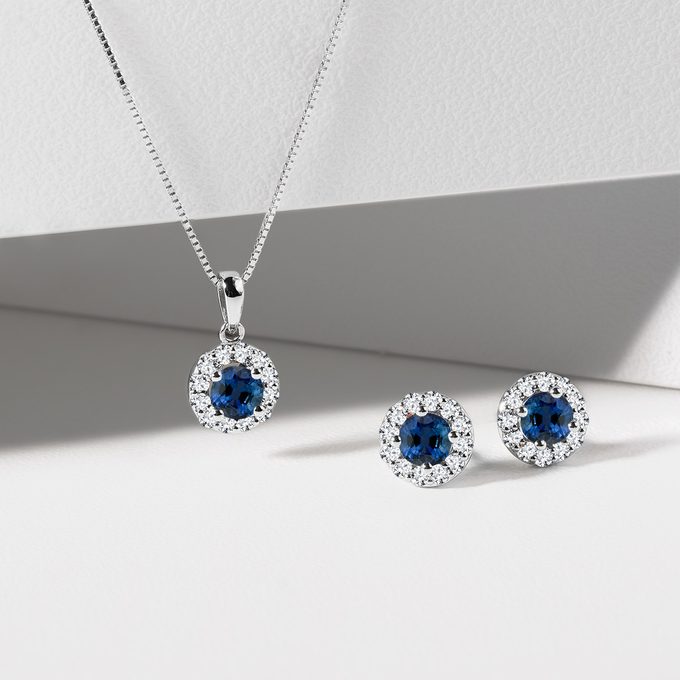
Traditional sapphire deposits
Sri Lanka is considered to be the most traditional source of sapphires. The sapphires from Sri Lanka come from river alluviums and have been mined there since ancient times. In fact Ceylon sapphires decorate Roman and Byzantine jewellery and they were not even forgotten about in the Middle Ages when Sri Lanka continued to supply Europe with its blue treasures – same as it does today. Even the method of mining has not changed much in thousands of years. Mining automation is minimal and most of the work must be done by hand. The local government keeps industrial mining to a minimum too so that it can employ as many people as possible and the deposits are not mined out right away.
Other historical deposits include India, Thailand, Burma and Australia. In the US, multicoloured fancy sapphires are currently mined in Montana. Sapphire mining is so important there that in the 1960s the sapphire was declared an official state stone.
A very promising newcomer to the market is Madagascar where sapphires with very intense blue shades have been found.
The biggest of the big
It was in fact in Madagascar in 1995 that a huge sapphire of gemstone quality and beautiful blue colours was found. It’s called the Millennium Sapphire and weighs an incredible 61,500 carats which is 27.1 lbs. It was turned into a carving that pays homage to the greatest creations, artists and thinkers of humanity. There are 134 individuals carved into the stone including Monet, Edison, Einstein, Leonardo da Vinci, Confucius and others. It is no wonder then that it entered the Guinness Book of World Records as the largest carved sapphire in the world in 2001. It was auctioned off for $130 million.
Sapphire jewellery: luxurious and original
Sapphires are very hard as a gemstone and come in many colour varieties. As a result, their beauty is long lasting and they won't easily get damaged. Sapphires are a traditional stone that people have decorated themselves with for centuries, and in jewellery they always literally shine. Explore our collection of jewellery with blue, pink and yellow sapphires to see this for yourself.
Sapphires have a high degree of brilliance, they sparkle beautifully and they are ideal jewellery for special occasions such as engagements, weddings and anniversaries.
Caring for sapphire jewellery is not difficult. The gemstone does not scratch easily but it doesn’t like temperature shocks. We recommend removing sapphire jewellery before cooking and cleaning for instance, in order to protect it from dirt. If it does get dirty and loses its sparkle, bring it to our jewellery studio and we will make it look like new again for you. As part of our post-warranty care for all KLENOTA jewellery, we will do this for you free of charge.
What to watch out for
Almost all sapphires currently on the market are heat treated to improve their colour and brightness. However as is always the case, untreated stones of the same colour and quality have a higher value than modified stones.
An untrained eye could easily confuse sapphires with other minerals such as light blue aquamarines or topaz as has often been the case in the past. However such confusion was usually not intentional.
To produce counterfeit sapphires on the other hand, glass substitutes were generally used. The best imitations were made by baking pieces of blue into the clear glass and creating blue spots which were then cut and polished. The result was very similar to Ceylon sapphires. The most perfect counterfeit sapphires can be found in a 9th century Holy Cross in the Nuremberg Museum. There are 15 large blue stones on it and until recently it was believed that they were sapphires. However the Czech gemologist Jaroslav Hyršl discovered during a detailed examination, that they were not sapphires and that they were in fact quartz with blue glass melted on.
You don't need to worry about the authenticity of any gemstone at the KLENOTA jewellery studio since each piece of jewellery you buy comes with its own certificate.
 Great Britain
Great Britain
